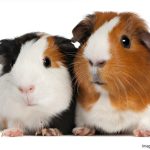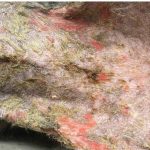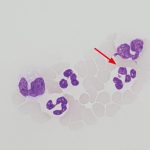The aim of hygiene measures in veterinary practices and clinics is to prevent the spread and transmission of infectious agents. Effective hygiene management not only protects patients but also practice staff from zoonoses and infections caused by multi-resistant germs – MRSA is particularly prevalent in equine practices.
In addition to basic hygiene measures, such as wearing protective clothing and maintaining hand hygiene, properly executed cleaning and disinfection steps play a crucial role.
Therefore, a specific hygiene plan tailored to the practice is required, which should be developed by trained practice staff. We are happy to assist with this: we offer hygiene inspections ‒ both on-site at your practice or clinic, and NEW: also online. An inspection includes an on-site tour with an assessment of the premises (available for online bookings as well) and a detailed discussion of the results (duration approx. 60-120 minutes). Additionally, an inspection report and the development of a customised hygiene concept can be commissioned. In case of problems (or issues), such as the frequent occurrence of wound infections, errors in cleaning and disinfection management can be identified and corrected, thereby optimising operational hygiene.
You can order an inspection via our hygiene submission form or by telephone or email to hygiene@laboklin.com.
The effectiveness of the implemented hygiene measures should be evaluated at regular intervals (at least twice a year). For this purpose, we offer a wide range of examinations for equine practices:
Sterilizer control
Bioindicators ‒ spores of Bacillus atrophaeus (for hot air “sterilizer”) or Geobacillus stearothermophilus (for steam sterilizers) (see Fig. 1) ‒ are placed at locations within the appliance where unfavourable sterilization conditions are anticipated. The sterilization programme is then conducted as usual. After the programme, the bioindicators are returned to the laboratory for analysis. The test results take approximately 8 days.

Examination of Surface Disinfection
‘Critical’ surfaces, such as the operating table in an equine clinic, should be sampled. The surface to be tested is first cleaned and disinfected. Contact plates are then placed on top of the surface for approximately 10 seconds and are sent to the laboratory sealed (see Fig. 2). Test results are available after 3-4 days. The identified microorganisms are reported as CFU (colony-forming units) per plate.

Examination of Surface Contamination
If surface contamination is suspected, contact plates can be used to collect samples. Unlike surface disinfection tests, the focus here is on assessing the current level of contamination. This method can be particularly useful to the staff, for highlighting critical areas, such as door handles.
Endoscope disinfection control
The sample sets include swabs for sampling the distal end and bending section of the endoscope, as well as screw cap containers for sampling the air-water and instrument channels, and the optic rinsing bottle. The endoscope is cleaned and disinfected as usual. The channels are flushed with sterile NaCl solution, and the liquid is collected. An additional sample is taken from the optic rinsing bottle. The endoscope examination takes approximately 3-5 days. Enterobacteriaceae such as E. coli, Pseudomonas aeruginosa, and other nonfermenters, Staphylococcus aureus, Enterococcus spp., and pathogens associated with nosocomial infections should not be detected. Endoscopes should be checked regularly, as they pose an increased risk of infection due to their use within the body.
Disinfectant testing
This test evaluates the cleanliness of the hose system in self-mixing disinfectant dispensers. For the efficacy test, 100 ml of the disinfectant solution to be tested is placed in a screw cap container with inhibitor broth. The test duration is 3 days.
Checking the Microbiological Air Quality
To assess air quality, air settlement plates are placed in the room to be analysed for more than 4 hours in a draught-free environment. They are then resealed and sent to the laboratory. This test is suitable for air samples from areas such as surgery or clinic rooms ‒ in an equine clinic, for example, this would include the operating theatre. Typically, air samples are only collected when there are significant hygiene concerns. This method is not appropriate for analysing air in stables or similar environments.
Documentation
If you pass two hygiene tests per year, you will receive a hygiene certificate from Laboklin, allowing you to demonstrate your commitment to business partners and clients.
Analysis of Hygiene Samples
The annual statistics reveal both encouraging and concerning results. Nearly all sample sets passed the functionality test for sterilizers. However, over half of the plates analysed for proper surface disinfection failed to do so. The endoscope examination showed that more than 75% failed to meet hygiene standards, often due to contamination of the optic rinsing bottle, which frequently resulted in exceeding the limit values (see Fig. 3).

In the event of anomalies, the practice’s or clinic’s hygiene concept should be reviewed, and additional hygiene measures should be implemented. The inspection, which includes the development of a hygiene plan and regular staff training, can help improve the hygiene standards of the practice or clinic.
Alexandra Herbst,
Ann-Kathrin Schieder, Martin Felten




